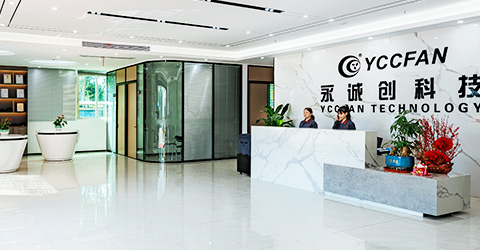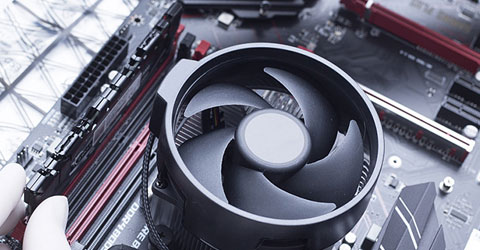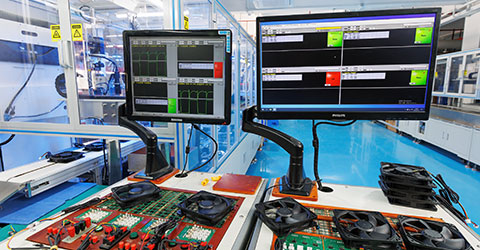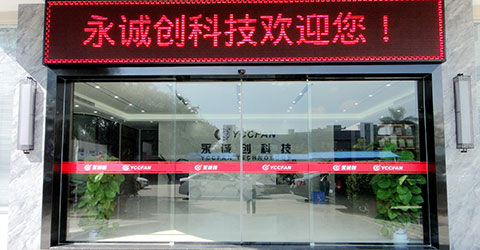Exploring the Role of 80mm Fans in Power, Control, and Computing Devices
From desktop computers to control panels, 80mm fans are widely adopted for their compatibility, quiet operation, and ease of integration. This article takes a closer look at what makes 80mm fans so widely used across industries—and why they remain a trusted choice in space-sensitive cooling applications.
1.What Is an 80mm Fan?
An 80mm fan is a compact cooling solution with physical dimensions of 80 by 80 millimeters, most often housed in a square-frame design. Its size makes it a popular choice in space-constrained systems where efficient heat dissipation is still required.
These fans are typically available in various thickness options, such as 25mm or 38mm, and come in both DC (12V, 24V) and AC (110V, 220V) versions, depending on the application—ranging from personal electronics to industrial-grade machinery. The fan’s performance, noise level, and service life are largely influenced by the type of bearing used, which may include sleeve, ball, or fluid dynamic bearings.
When compared to other common fan sizes:
Fan Size | Airflow Performance | Noise Level | Space Requirement | Typical Use Case |
60mm | Low airflow | Moderate to high | Very compact (tight spaces) | Small enclosures, embedded systems |
80mm | Moderate airflow | Balanced noise profile | Compact and versatile | Desktops, power supplies, control panels |
92mm | High airflow | Quieter than smaller fans | Moderate to large chassis | Workstations, higher-performance electronics |
120mm | Very high airflow | Quiet operation | Requires more installation space | Gaming PCs, server racks, industrial cabinets |
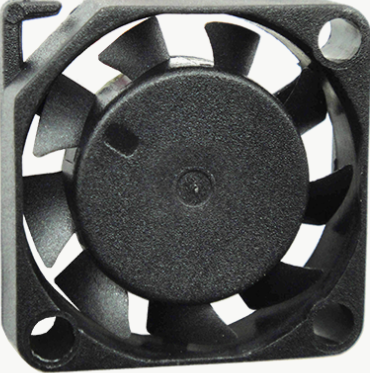
2.Common Applications of 80mm Fans
Thanks to their compact design and efficient airflow performance, 80mm fans are used across a wide range of industries and devices. Their versatility allows them to address diverse thermal challenges—particularly where space is limited and reliable cooling is essential. Below are five of the most practical use cases:
2.1 Desktop Computers and Workstations
In both home-built PCs and commercial workstation systems, 80mm fans are commonly installed as CPU coolers, case exhaust fans, or as part of power supply ventilation. Thanks to their compact size, their dimensions suit standard ATX and micro-ATX enclosures, providing a solid balance between cooling effectiveness and acoustic control.
Moreover, unlike smaller high-speed fans that can be noisy, 80mm models offer steady airflow while keeping noise at a tolerable level. As a result, they are ideal for maintaining system longevity while also ensuring a comfortable acoustic environment for users.
2.2 Industrial Electrical Enclosures
Inside electrical control panels and industrial automation cabinets, these fans are commonly employed to remove excess heat generated by components like PLCs, contactors, and power converters. Because these environments typically operate continuously, cooling systems must be both compact and durable.
In this context, 80mm fans fit these criteria well—as they provide dependable airflow in restricted spaces while also helping to maintain a stable internal temperature. This temperature stability is essential, as it ensures uninterrupted machine operation and reduces the risk of heat-related failures.
2.3 3D Printing and CNC Equipment
For devices like 3D printers and CNC routers, thermal control is essential in order to preserve mechanical precision and electrical stability. To achieve this, 80mm fans are typically placed near driver boards, motor modules, and power control sections, where they effectively help mitigate heat accumulation during long print or machining cycles.
Furthermore, their ability to operate quietly and consistently directly contributes to better output quality, reduced failure rates, and extended equipment lifespan. Therefore, they are a valuable component in maintaining performance over prolonged use.
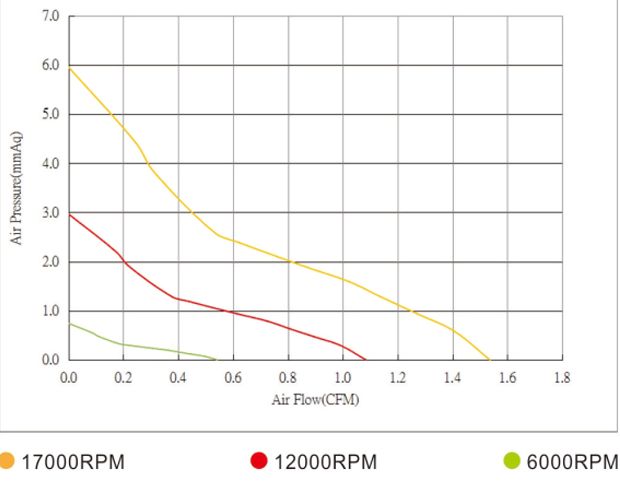
3.Benefits of Using 80mm Fans
Choosing the right fan size can significantly impact both the efficiency and usability of a cooling system. 80mm fans, in particular, offer a well-rounded solution that suits a variety of thermal management needs. Below are several key benefits that make them a preferred choice across industries and applications:
3.1 Balanced Size for Wide Compatibility
The 80×80mm form factor provides a practical middle ground between compact design and functional airflow output. Unlike smaller fans, which may struggle to deliver sufficient cooling, and larger fans, which may not fit all housings, 80mm fans are small enough to install in tight spaces yet large enough to move a meaningful volume of air.
As a result, they are widely compatible with desktop PCs, industrial control panels, power supplies, and embedded systems, making them a highly flexible option for both consumer and industrial designs.
3.2 Optimized Performance with Quiet Operation
While airflow is essential, noise can be equally critical—especially in workspaces or noise-sensitive environments. Thanks to their size and operating speed, 80mm fans are capable of producing moderate airflow without generating excessive noise. Compared to high-RPM smaller fans, they offer a quieter user experience, and in contrast to oversized units, they don’t compromise on space. This balance makes them ideal for applications that require dependable thermal control without sacrificing acoustic comfort.
3.3 Flexible Options and Easy Integration
Another notable advantage is the wide availability of voltage types, connection styles, and mounting options. Whether your design requires DC input (12V/24V) for electronics, or AC input (110V/220V) for industrial equipment, 80mm fans are offered in configurations to match.
Additionally, users can choose between different bearing types, connector types, and airflow directions, giving engineers the flexibility to optimize cooling systems to fit exact project requirements. Installation is also straightforward, as most models are designed for standard mounting hole patterns, minimizing integration time and effort.
In summary, 80mm fans provide a strong balance of size, performance, and configurability, making them a go-to solution for applications that demand reliable cooling in limited spaces.
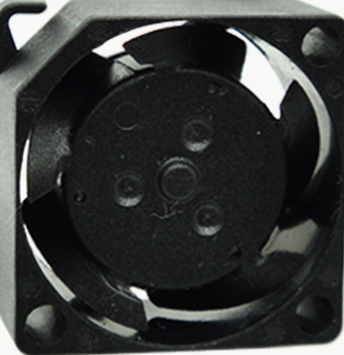
4.How 80mm Fans Compare to Micro and Mini Fans
While 80mm fans are known for their balance between size and performance, micro fans (typically under 40mm) and mini fans (between 40–60mm) are better suited for ultra-compact devices like embedded electronics, handheld instruments, and miniature power systems.
Compared to these miniature fans, 80mm models deliver greater airflow with lower noise levels, making them ideal for applications where space is limited but performance cannot be compromised.
Learn more:
Conclusion:
With their well-balanced size, airflow performance, and design flexibility, 80mm fans offer a reliable solution for thermal management in everything from home electronics to industrial-grade systems. Their ability to fit tight spaces without compromising on efficiency or acoustics makes them especially valuable in today’s compact device designs.


